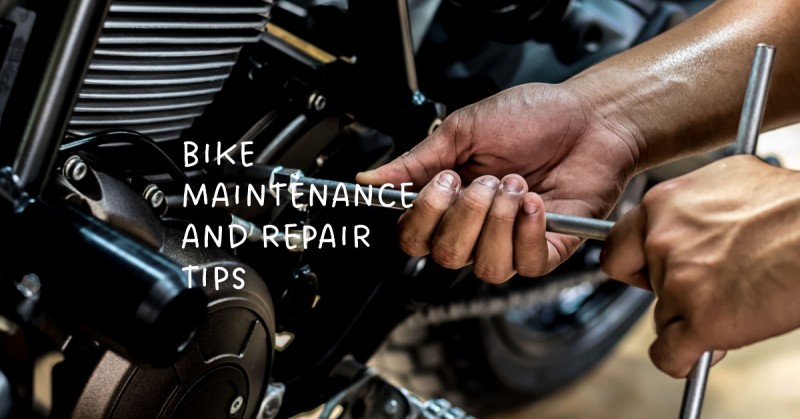
Maintaining and repairing your bike is crucial to ensure its optimal performance, longevity, and safety. By regularly inspecting and addressing common issues, you can prevent major breakdowns and enjoy a smooth riding experience. In this article, we will provide you with valuable tips on bike maintenance and repair to keep your two-wheeled companion in excellent condition.
Essential Tools for Bike Maintenance
Before we delve into the maintenance procedures, let's take a look at the essential tools you should have in your bike repair kit. These tools will help you tackle various tasks efficiently:
Having these tools readily available will enable you to perform most basic repairs and adjustments.
Regular Cleaning and Lubrication
Keeping your bike clean is vital for its overall health. Regularly remove dirt, mud, and debris from the frame, wheels, and drivetrain. Use a gentle cleaning solution and a soft brush to avoid damaging the components. After cleaning, ensure thorough drying to prevent rust formation.
Additionally, lubricating your bike's moving parts is essential for smooth operation. Apply a suitable lubricant to the chain, derailleur pulleys, brake pivots, and other relevant areas. Wipe off any excess lubricant to prevent attracting more dirt.
Checking and Adjusting the Brakes
Properly functioning brakes are crucial for your safety while riding. Regularly inspect the brake pads for wear and replace them if necessary. Ensure that the brake pads make full contact with the rim or disc when engaged.
Adjust the brake cable tension to achieve optimal braking performance. If your bike has hydraulic brakes, consult the manufacturer's guidelines for bleeding and maintenance.
Inspecting and Maintaining the Chain
The bike chain is a critical component that requires regular inspection and maintenance. Check for any signs of wear, such as elongation, rust, or stiff links. Clean the chain regularly and lubricate it using a bicycle-specific chain lubricant.
It's essential to maintain proper chain tension and alignment. Use a chain tool to remove excess links if the chain has stretched. Refer to your bike's manual for specific instructions on chain maintenance.
Ensuring Proper Tire Pressure
Maintaining the correct tire pressure is vital for a comfortable and safe ride. Use a reliable pressure gauge to check the tire pressure regularly. Inflate the tires to the recommended pressure specified by the manufacturer, considering factors like terrain and rider weight.
Low tire pressure can lead to sluggish performance, increased rolling resistance, and a higher risk of pinch flats. On the other hand, overinflated tires can result in reduced traction and a harsh ride. Find the right balance for optimal performance.
Adjusting Gears and Shifting System
Smooth and accurate gear shifting enhances your cycling experience. Regularly inspect the gear cables for fraying or damage, and replace them if necessary. Use barrel adjusters to fine-tune the shifting performance.
Ensure that the gears are properly indexed, meaning they align with each corresponding gear on the cassette or freewheel. Adjust the limit screws to prevent chain skipping or falling off the gears. If you're unsure about gear adjustment, consult a professional bike mechanic.
Maintaining Suspension Components
If your bike is equipped with suspension forks or rear shocks, proper maintenance is crucial to ensure optimal performance and durability. Check the suspension components for any signs of oil leakage, damage, or wear.
Follow the manufacturer's guidelines for suspension maintenance, including recommended service intervals and lubrication. Regularly clean and inspect the seals, and consider professional servicing for more complex suspension tasks.
Checking and Tightening Bolts
Regularly check and tighten the bolts on your bike to prevent potential issues. Pay attention to critical areas like the stem, handlebars, seat post, and crankset. Loose bolts can lead to instability, unwanted vibrations, and even accidents.
Use an appropriate torque wrench or a torque key to tighten the bolts to the manufacturer's recommended torque specifications. Over-tightening can damage the components, while insufficient tightening may result in loosening over time.
Inspecting and Replacing Worn-Out Parts
Over time, various components of your bike may wear out and require replacement. Inspect parts such as the brake pads, chainrings, cassette, cables, and tires for signs of wear and tear. Replace them promptly to avoid performance issues or safety hazards.
Consider seeking professional assistance for complex replacements or if you're unsure about the correct procedures. Properly functioning and well-maintained components contribute to a smoother and safer ride.
Storing and Transporting Your Bike
When not in use, it's essential to store and transport your bike properly to avoid damage. Use a designated bike rack or a sturdy wall mount to store your bike vertically or horizontally. This prevents excessive pressure on the wheels and frame.
If you need to transport your bike, use a secure bike rack or a protective bike bag. Ensure that the bike is securely fastened to prevent any movement or damage during transportation.
Conclusion
Regular bike maintenance and repair are vital for ensuring the optimal performance and longevity of your bicycle. By following the tips provided in this article, you can keep your bike in excellent condition and enjoy a smoother, safer, and more enjoyable riding experience.
Remember to perform regular cleaning and lubrication, check and adjust brakes, inspect and maintain the chain, ensure proper tire pressure, adjust gears and shifting system, maintain suspension components, tighten bolts, replace worn-out parts when necessary, and store and transport your bike properly.
By investing time and effort into maintaining your bike, you'll be rewarded with many miles of trouble-free cycling adventures.
Factors Leading to the Discontinuation of the Rajdoot 350 in India
KTM India Launches the 2023 KTM 200 Duke: A Powerhouse Upgrade for Performance Enthusiasts